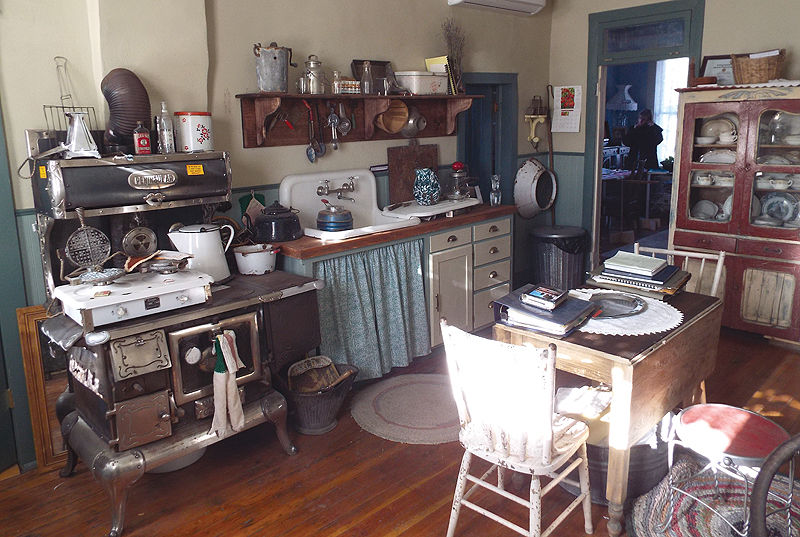“My grandpa and grandma had one of those!”
It’s a refrain often heard from visitors at the Bryner Pioneer Museum on the corner of 100 East and 100 South Streets in Price. “One of those” could refer to the wood burning kitchen stove, early washing machine, china hutch, buffet, an iron-rite steam ironing machine, an upright piano, several old time radios, two pipe organs, quilting stands, or dozens of other antique items from the turn of the 20th century on display at the museum.
About two dozen members of the Carbon County Historical Society met Thursday evening at the museum for a tour and oral history by curator Sue Christensen, who spearheaded the renovation project over many years to convert the historic home into a pioneer-era museum.
According to its website, Carbon County Historical Society was organized in 1977. The goal of the Society is to preserve the history, photographs and memories of those who lived here. The group meets on the last Thursday of each month to listen to speakers and learn more about the history of the county
Historical Society members Mr. and Mrs. Neldon Huff were among the tour group at the Bryner Pioneer Museum. Huff said, “It was great. I just love old stuff like that.”
History of the home
The original owner of the home was Albert Bryner, the second son of Swiss Immigrants Ulrich and Maria Mathis Bryner. Christensen said Ulrich Bryner held title to the entire block at one time. The southeast corner of the property was given to Albert and his wife Mariah Pace Bryner, who built the home. Construction was completed in 1892, just before Albert was called on a mission to Germany by the LDS Church.
Aromas emanating from the late Victorian home over the years have ranged from baking bread to embalming fluid. It has housed a number of businesses, including the Thomas-Deseret Mortuary and the Wallace Mortuary. At one time it was a bed and breakfast inn for travelers waiting to catch a train at the depot across the street. It has also been an upholstery shop, a yard goods business, a sewing machine outlet and a credit union. The house was vacant for almost 20 years before its renovation.
A crowd of well-wishers and community historians celebrated the completion of the first floor restoration last July. The ribbon was cut by Bruce Bryner July 22, on the occasion of his 92nd birthday. Christensen said she endeavored to have the museum ready by that date. “It was a huge job and he was thrilled he was able to be here.” Bruce was a grandson of the original owner. And it was Bruce who donated the house for a museum. He passed away last October.
Christensen said it was difficult to get grants while the home was still in private hands but after Bryner deeded it over to the museum foundation, grants were received from the State of Utah, the Eccles Foundation, the National Endowment for the Arts and others. She said there were many local private donations as well, and a lot of volunteer work. “There are so many ties to everyone in the community, from the descendants of those who lived in the home, or those who stayed at the inn, to those who were customers of the many other businesses,” she said. “Everybody should come and see it.”

